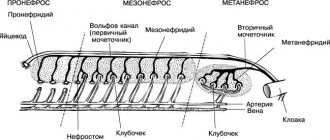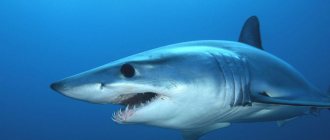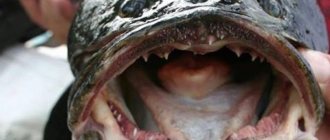- November 16, 2018
- Tips for tourists
- Rezeda Zaripova
Oceans and seas are the cradle of earthly life. All life on this planet, according to some theories, originated in water. The sea is like a kind of huge metropolis, where its own laws are established, where every living creature occupies a certain place and performs its important function. If this order is violated, this world may cease to exist. Therefore, it is important for everyone to know about the richness and diversity of the water world and its features.
You can learn about one of the marine inhabitants of this fairy-tale world by reading the article. Are there sharks in the seas? What are they and what do they eat? The answers to these questions can be found by reading the information in the article.
Mysterious depths of the seas and oceans
The depths of the sea have always attracted and continue to attract people with their mystery. They have long been considered the mysterious and fabulous kingdom of Neptune and Leviathan. Stories about amazing, unseen animals sometimes frightened the most experienced sailors.
The world's oceans attract both extreme sports enthusiasts and scientists with their secrets and riddles. Only a fraction of the living organisms inhabiting vast layers of water are known today. Among the most famous are sharks (information about where sharks are found is later in the article). Only a few of the species pose a real danger to humans.
There are other deep-sea fish in the sea that have an unusual appearance and peculiar behavior. Nevertheless, they are all real inhabitants of the seas and oceans.
Features of sharks
It is noteworthy that sharks do not have a swim bladder, characteristic of ordinary fish. A variety of species of these animals have developed a way out of this situation. For example, sand sharks take air into their stomach, thereby creating the semblance of a non-existent organ. Many people use the liver instead of the same bladder. Squalene bicarbonate, which is quite light, accumulates in it.
In addition, sharks have light cartilage and bones, which gives them neutral buoyancy. Everything else is created by the constant movement of the animal, which is why many species of sharks sleep little.
Phylum chordata. Fish class
Cartilaginous fish (lat. Chondrichthyes) are one of two classes of existing fish. The most famous representatives are sharks (Selachii) and rays (Batoidea). In cartilaginous fish, the skeleton consists of cartilage, which, however, due to the deposition of minerals, can become quite hard.
In this regard, in order not to sink to the bottom, cartilaginous fish must be in motion. Cartilaginous fish are characterized by internal fertilization: the egg is fertilized in the upper part of the oviduct, where it enters from the ovary.
In the first case, the egg develops in external conditions and a small individual of cartilaginous fish emerges from it; in the second case, the embryo develops in the mother’s body.
Blood is red due to the presence of erythrocytes (red blood cells) and a pigment - hemoglobin. The excretory organs are the kidneys, in the form of two dark red stripes stretching along the spine. Through the esophagus, food enters the stomach, then into the intestine, which consists of three sections: the small intestine, the large intestine and the rectum. In addition, there is a well-developed pancreas and liver.
The oldest known bony fish fossils date back to the Ludlovian era of the Silurian period (about 425 million years ago). From the oral cavity, food passes into the pharynx, from it into the esophagus, and then into the voluminous stomach or directly into the intestines (crucian carp).
The duct of the gallbladder, liver and pancreatic duct flow into the initial part of the small intestine.
Bony fish have a swim bladder under their spine, filled with a mixture of gases that are released from the blood vessels. As the volume of the bubble increases, the body density of the fish decreases and it floats up easily. When the volume of the bubble decreases, the fish swims deeper. From the oral cavity, water passes through the gill slits, washes the gills and comes out from under the gill covers.
The circulatory system of fish is closed; the heart consists of 2 chambers: the atrium and the ventricle.
After the blood is enriched with oxygen (oxygen-enriched blood is called arterial), the vessels reassemble into an artery, which branches into smaller arteries and capillaries. In the organs of the body, through the walls of the capillaries, oxygen and nutrients enter the tissues, and from the tissues carbon dioxide and other waste products enter the blood.
In zoological literature, the 20th century group of bony fishes was usually considered as a class consisting of two subclasses: Actinopterygii and Sarcopterygii.
Thus, cartilaginous fish are oviparous and viviparous. Cartilaginous fish appeared at the turn of the Silurian and Devonian, about 420 million years ago, and reached their peak in the Carboniferous.
Modern fish have three types of scales: placoid, ganoid and bony.
, and ganoid and bone are derivatives of the most ancient placoid scales (Fig. 4).
Placoid scale
, consisting of a rhombic plate located in the dermis and a spine protruding outward, covers the body of cartilaginous fish and is replaced several times during their life.
The scales consist of an organic substance impregnated with lime - dentin, which does not contain cellular elements.
The outside of the spine is covered with a dense enamel-like substance - vitrodentin. The tooth cavity is filled with dental pulp - pulp, formed by loose connective tissue with blood vessels.
Rice. 4. The structure of various types of fish scales:
A - placoid; B - ganoid; B - bone: a - herring; b - bream; c - perch; d — scales (in section).
Some of the placoid scales grow greatly, forming placoid plaques, for example in the sea fox.
All spines in cartilaginous fish are transformed placoid scales.
Rice. 5. Placoid scales of cartilaginous fish.
Ganoid scale
It has a rhombic shape and a lateral protrusion in the form of a tooth, with the help of which the scales are connected to each other, forming a kind of shell.
This scale is characteristic of bony ganoids, multi-feathers, is preserved on the tail of sturgeons and consists of three layers: the upper, compacted (ganoine), the middle, containing numerous tubules (cosmina), and the bottom, consisting of bone substance (isopedine).
A variety of ganoid scales is cosmoid in lobe-finned fish (without the upper layer of ganoid).
Rice. 6. Cycloid scales of bony fish
Bone scale
formed as a result of the transformation of the ganoid - the layers of ganoin and cosmin disappeared and only bone substance remained.
Based on the nature of the surface, two types of bone scales are distinguished: cycloid
with a smooth rear edge (herring, carp) and
ctenoid
, the rear edge of which is armed with spines (perch).
There are three layers in the bone scales - the upper transparent shiny structureless one, the middle integumentary one and the lower main one. The lower layer is composed of thin bone plates underlying one another.
The growth of scales occurs in such a way that under the small first plate laid in the fry, the next year another larger one is laid, etc. Thus, the smallest and oldest plate is on top, and the largest and youngest is below.
The number of plates in the lower layer corresponds to the age of the fish. Above the lower main layer is a covering, mineralized layer with ribs, or sclerites.
With intensive growth, wide and distant sclerites with high ridges are formed on the covering layer, and with slower growth, narrow and close sclerites with low ridges are formed.
To determine the age of a fish, the surface layer of scales with sclerites is studied.
Zones of convergence of sclerites (usually darker) are called annual rings and counting them allows you to determine the age of the fish.
Venom glands
. Some fish have venom-secreting glands in the epidermis, located mainly at the base of the spines or spiny rays of the fins.
Sometimes poison-secreting cells are formed and function only during reproduction, in other cases - constantly. In fish, there are three types of poisonous glands (Fig. 7). The most primitive of them are individual epidermal cells containing poison and scattered at the base of the spines of the fins and the spines of the gill cover (stargazer).
In other fish species, a complex of poisonous cells (stingray) is formed in the epidermis near the spines and spines.
And finally, in many species, poisonous cells form an independent multicellular poisonous gland with strong poison near the thorns and spines (sea dragon, terrible wart, sea bass)
In a stingray, when pricked, the poison enters the wound through the thorn groove and causes acute pain, severe swelling, chills, nausea and vomiting, and in some cases death occurs.
The most powerful poison is produced in the poisonous glands of the terrible wart.
It destroys red blood cells, affects the nervous system and leads to paralysis. When poison enters the bloodstream, death soon occurs. Fishes that have a specialized venomous apparatus are called venom-bearing.
, and fish with poisonous organs and tissues are poisonous. The most poisonous are considered to be fish from the order of fused-jawed fish, whose gonads, liver, intestines, and skin contain a neurotoxin (tetrodotoxin), which can cause rapid death, since it is 10 times more toxic than curare poison. The meat of these fish is edible and in some countries (Japan) is highly valued, which often leads to fatal poisoning.
Rice.
7. The main types of poisonous glands in fish:
A - unicellular glands of the epidermis of the fin spine; B - complex of unicellular glands of the epidermis of the tail spine of the stingray; 5 - compact multicellular gland of the operculum of the sea dragon; 1 - epidermis; 2 - mucous cells; 3 - glandular cells; 4—supporting cells; 5 - false excretory duct; 6 - poison protruding outward; 7—thorn; 8 - poisonous gland.
Of the fish that live in the waters of the Russian Federation, the caviar and milt of the marinka and osman are poisonous.
Lamprey mucus is also poisonous. However, those fish that, as a result of injury or poor-quality storage, are infected with toxic microbes (including botulinus) and the consumption of which can lead to poisoning should not be classified as poisonous.
Glowing organs.
The luminous organs (photophores) of many deep-sea fish consist of luminous cells (photocytes) containing a special substance, luciferin.
Luminous photophore cells are derivatives of the glandular epidermis.
The structure of photophores, their location and the light emitted are different. In luminous anchovies, for example, a cluster of luminous cells located in the muscular cavity is underlying black pigment cells, covered with a shiny layer that acts as a reflector. In front of the luminous cells there is a transparent, modified scale that acts as a lens. Some photophores have a diaphragm that allows you to change the direction and intensity of light.
Rice. 8. Glowing organs of deep-sea fish, located in the form of crescents just under the eyes
Recommended reading
1. Ichthyology: guidelines for independent work of students in the specialty “Aquatic biological resources and aquaculture” / comp. Academician G.G. Matishov. – Rostov n/d: Publishing house of the Southern Scientific Center of the Russian Academy of Sciences, 2013. – 92 p.
2. Ivanov V.P., Egorova V.I. Fundamentals of ichthyology: textbook. allowance. Astrakhan. state tech. univ. – Astrakhan: ASTU Publishing House, 2008. – 336 p.
3. Ilmast N.V. Introduction to ichthyology (textbook). – Petrozavodsk: Karelian Scientific Center of the Russian Academy of Sciences. 2005. 148 p.
4. Kotlyar O.A., Mamontova R.P., Course of lectures on ichthyology. – M.: Kolos, 2007.
5. Moiseev P.A., Azizova N.A., Kuranova I.I. Ichthyology: Textbook.-M.: Easy. and food industry, 1981.- 384 p.
6. Naumov N.P., Kartashev N.N. Zoology of vertebrates. – Part 1. – Lower chordates, jawless fish, amphibians: Textbook for biol. specialist. univ. – M.: Higher School, 1970. – 333 p., ill.
7. Skornyakov V.I., Apollova T.A., Mukhordova L.L. Workshop on ichthyology: Textbook - M.: Agropromidat, 1986. - 270 p.
Species of sharks
There are sharks in the seas, which are dangerous marine animals for people. Today, scientists have identified more than 450 species of these predators.
There are even very small representatives of this family. For example, a species of deep-sea shark, Etmopterus perryi, lives off the coast of Venezuela and Colombia. Its length is approximately 20 centimeters.
Where are the big sharks found? The largest species is the whale shark, reaching 20 meters in length. However, unlike the long-extinct megalodon, it is not a predator. Its diet consists of plankton, small fish and squid. This is a rather rare species. Its numbers have been steadily declining in recent years. The main threat is fishing by fishermen in countries in Southeast and South Asia, where the meat of this marine animal is eaten.
It should be noted that only four types of sharks are the most dangerous - white, longtip, blunt-nose and tiger. The most deadly are the blunt-nosed and white ones. The latter can sense blood at a distance of 5 kilometers and quietly approach the victim. It has a specific color that makes it invisible from the surface.
Shark diet
The food preferences of sharks are very diverse, and depend on the characteristics of the species and their habitats. The main food is plankton, fish, crustaceans and mammals.
For example, the white shark prefers seals and sea lions, but if possible, it can hunt whale mammals. This is due to the ability of teeth to grab large pieces of flesh.
The diet of benthic species of sharks consists of crabs and other crustaceans. Short teeth are capable of breaking the shell. Basking largemouth and whale sharks prefer plankton and small marine organisms. Some species (for example, the tiger shark) are omnivores and can swallow almost anything that comes their way.
Ganoid scales are
(from the Greek ganos - shine) scales of lower ray-finned fish, covered on the outside with a hard shiny layer of the enamel-like substance ganoin. A distinction is made between the paleoniscoid ganoids of fossil paleoniscus and modern polyfins and the lepidosteoid ganoids of fossil bony ganoids and modern armored pikes. Paleoniscoid h. has a bone base of trough-shaped plates nested one inside the other, along the upper edge of which there are ridges of dentin.
Ganoine plates grow symmetrically to the base plates. In the lepidosteoid h. there is no dentin, and the bone base is penetrated by numerous canals. The shape of the h. is usually rhombic. On the upper edge of each scale there is a spike that fits into the recess of the overlying one.
Arranged in rings slightly inclined to the longitudinal axis of the body, the muscle forms a shell, which, in addition to its protective function, provides support for the muscles and provides the elasticity of the body necessary for movement.
In what seas are sharks found?
This information is useful for those who love traveling. Many people are interested in where sharks live. Such anxiety is associated with concerns about one’s safety. In reality, a shark attack on a person is rare. According to statistics, only a few species can attack a person, and the reason is often that the fish simply does not understand who is in front of it. And human meat does not belong to the chosen products of a predator.
So where are sharks found? This is most of the coasts that belong to the waters of the World Ocean. For example, the Red Sea, Far Eastern seas, etc.
In terms of shark attacks, according to unofficial data, countries such as Tanzania, Ghana and Mozambique are considered the most dangerous. According to official statistics, these include Australia, Brazil, New Zealand, South Africa and the USA. The Mediterranean Sea is a haven for dangerous whitetip and tiger sharks. They can swim from the ocean to the Red Sea. The Black, Azov and Northern seas are completely safe in this regard.
In which Russian seas are sharks found?
In Russia, there were virtually no cases of shark attacks on humans until August 2011. The coastal Russian zone has always been considered safe in this regard. This status was lost after two shark attacks on divers occurred. This happened in Primorye (Telyakovsky Bay, Sea of Japan). The attack was carried out by a white shark. Until now, these cases are considered anomalous for Russian seas.
It is known that most sharks prefer warm seas, so the events of 2011 were associated to a greater extent with temporary warming of the waters of the Sea of Japan near Vladivostok. This event was also associated with the fact that Russian waters are cleaner in comparison with the South Asian and Chinese coasts of the Pacific Ocean. In general, sharks in the Russian seas are extremely few in number and relatively safe. Only a few of them are potentially dangerous.
Where else are there sharks in Russia? Sharks for Russia are both a common and unusual phenomenon. It is common that these predators live in almost all Russian seas that have contact with the ocean. And the unusualness is due to the fact that it is unusual for Russians to hear about the attack of these predators in the seas of Russia.
Shark attacks in the Sea of Okhotsk and the Sea of Japan cannot be ruled out. There cannot be any encounters with these predators in the Black Sea even in the distant future, since it is far for them to reach it. In this natural body of water you can find only 2 species - the katran (spiny spotted shark) and the cat shark (scyllium). They are completely safe. Where sharks are found, only divers can find themselves, but even then, a threat can only arise if they try to catch this sea monster with their hands. There are poisonous spines on its skin, and the katran will not attack a person, since it is small in size (about one meter long).
The situation is similar with the Baltic Sea, although it is in contact with the Atlantic. Desalination of Baltic waters is uncomfortable for sharks.
Both the white shark and the man-eating shark can live in the Yellow Sea, which is in contact with the Pacific Ocean. Basking sharks and hammerhead sharks may also swim in. They are not aggressive towards humans, but can cause some trouble if they are frightened or injured. And the likelihood of meeting them is minimal.
The Azov, Barents and White Seas (where sharks are found) are also not dangerous in terms of attacks. Their waters are home to species that feed on small fish and shellfish.
Fins[edit]
Diagram of the dorsal fin with landmarks indicated.
Flippers allow sharks to propel themselves and rise. Most sharks have eight fins: a pair of pectoral fins, a pair of pelvic fins, two dorsal fins, an anal fin, and a caudal fin. The pectoral fins are rigid, allowing for downward, upward and forward movement. Representatives of the order Hexanchiformes have only one dorsal fin. The anal fin is absent in the orders Squaliformes, Squatiniformes and Pristiophoriformes. Shark fins are supported by internal rays called ceratotrichia.
Tail[edit]
A shark's tail consists of a caudal stalk and caudal fin, which are the shark's main source of propulsion. In most sharks, a heterocercal caudal fin means the spine meets the (usually longer) upper lobe. The shape of the tail fin reflects the shark's lifestyle and can be divided into five categories:
- Fast-swimming open-water sharks such as mackerel sharks have a crescent-shaped tail with almost identical upper and lower lobes. High tail elongation improves swimming power and efficiency. These species usually also have lateral carinae on the caudal peduncle. The whale shark and basking shark also have this type of tail, although they tend to be more sedate animals than other examples.
- "Typical sharks" such as requiem sharks have tails in which the upper lobe is longer than the lower lobe. The top blade is angled upward at a moderate angle to the hull, balancing cruising efficiency with turning ability. Thresher sharks have a prime example of this tail, in which the upper lobe has been developed into a weapon to stun prey.
- Bottom-dwelling sharks such as cat sharks and carpet sharks have tails with long upper lobes and virtually no lower lobes. The top of the holder is at a very low angle, which sacrifices speed for maneuverability. These sharks usually swim with eel-like waves.
- Dog sharks also have tails with longer upper lobes than lower lobes. However, the spine passes through the upper lobe at a lower angle than the lobe itself, reducing the amount of downward thrust generated. Their tails cannot withstand high speeds, but combine the ability to surge in speed with agility.
- Angel sharks have tails that are unique among sharks. Their caudal fins are reverse heterocercal, the lower lobe is larger than the upper. [2]
Some interesting facts
- Many sharks are able to rest on the bottom by pumping water through their gills.
- Only a few species of shark regularly attack humans, and this occurs mainly due to prey misidentification.
- The speed of sharks is low, since it is important for them to conserve energy, but this does not in the least prevent them from developing high speed before attacking the intended victim.
- Sharks, having bitten off a piece of flesh from a person, usually spit it out, since this meat for them is not the kind of food (high in fat) that they need to replenish their energy reserves.
- Sharks are also susceptible to cancer. Observations of these animals in captivity showed that their organs are also affected by cancerous tumors. Moreover, the number of cases of these diseases turned out to be much higher where the water is dirtier.
Skin teeth or jaw scales?
The teeth of crocodiles and mammals are located in the dental sockets, or alveoli.
The teeth of all vertebrates, including humans, have this structure. TEETH, bone formations in the oral cavity of many vertebrates and humans. The location and number of teeth are reflected in the dental formula, which has important systematic significance. It can be assumed that the scales and teeth of a shark are homologous, that is, they have the same origin and a single structural plan.
Because of this, shark skin has a rough surface and is used as an abrasive material.
Inside the dermal tooth there is a cavity containing loose tissue, nerves and blood vessels - the pulp, and several canals extending from it. The internal structure of the jaw tooth is the same as that of placoid scales: enamel, dentin, pulp. But the teeth of most vertebrates are fixed in the jaw bones in special holes - alveoli.
They remain in the skin and are constantly replaced with changes in the skin epidermis.
The body of the embryo is formed from three layers of cells, or germ layers: the outer - ectoderm, the middle - mesoderm and the inner - endoderm.











